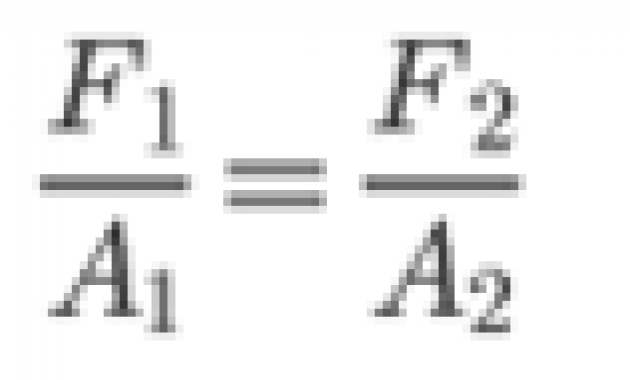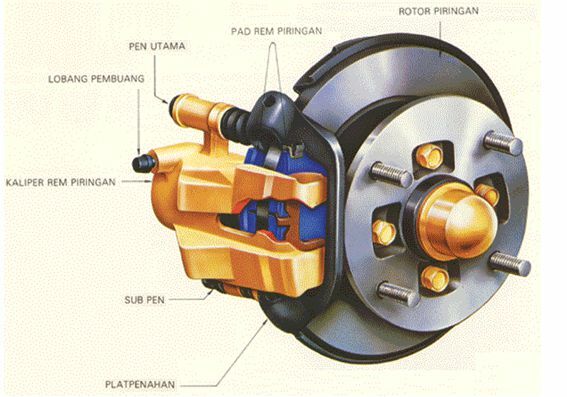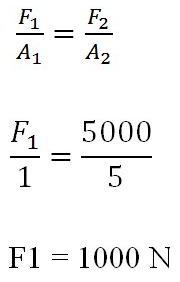Pascal's Law: Definition, Formulas, Application, Working Principles, Example Problems
Pascal's Law: Definition, Formulas, Application, Working Principles, Example Problems – In this discussion we will explain about Pascal's law. Which includes the meaning of Pascal's law, the sound of Pascal's law, Pascal's law formula, application or application Pascal's law, working principles or working methods and examples of Pascal's law problems which are discussed in full and light. For more details, please read the reviews below carefully.
Table of contents
-
Pascal's Law: Definition, Formulas, Application, Working Principles, Example Problems
- Understanding Pascal's Law
- Pascal's Law Formulas
-
Pascal's Law Working Principle
- 1. Hydraulic Disc Brake
- 2. Hydraulic jack
- 3. Hydraulic Pump
- 4. Hydraulic Press Tool
- Examples of Pascal's Law Problems
- Share this:
- Related posts:
Pascal's Law: Definition, Formulas, Application, Working Principles, Example Problems
Let us first discuss the meaning of Pascal's law carefully.
Understanding Pascal's Law
Pascal's law reads "If pressure is applied to one part of a liquid in a closed space, the liquid will be transmitted by the liquid in all directions equally".
The phenomenon of liquid pressure was initially studied by a physicist named Blaise Pascal (1623-1662) until a law called Pascal's law emerged.
In everyday life application of Pascal's law often used in automotive fields, hydraulic jacks, hydraulic disc brakes, hydraulic hand brakes, hydraulic presses, sphygmomanometers or sphygmomanometers. Pascal's law is the application of the concept of pressure in a liquid. If you have ever seen a mechanic using a hydraulic jack to lift a car, that is the application of Pascal's law.
Pascal's Law Formulas
Pascal's law statement can be explained by examining the behavior of liquids in a related vessel. If the suction I is given a compressive force F1 then the pressure obtained will be transmitted to the sucker II with the same magnitude, so that:
p1= p2
With description:
Also Read:Covalent Bonds: Definition, Characteristics, Types, Chemical Formulas and Compound Properties
F1 = force in cross section I (N)
F2 = force in cross section I (N)
A1 = cross-sectional area 1 (m2)
A2 = cross-sectional area 2 (m2)
Based on the above formula, the force F2 affected by each surface of the vessel. Thus, if the surface of the vessel is larger, the force obtained will also be greater. That is why a mechanic is able to lift a car.
Pascal's Law Working Principle
Tools that work by applying the working principle of Pascal's law include:
1. Hydraulic Disc Brake

The use of Pascal's law is applied to hydraulic brakes (discs). Brakes (discs) use fluid oil. When the foot presses on the brake pedal, the piston (connecting pipe) will put pressure on the oil in it. The pressure is then transmitted to the two output pistons which function as brake regulators.
This brake will clamp the metal disc which causes friction on the disc against the direction of motion of the disc so that the turning of the wheel stops. When the first piston (A1) is pressed, then the second piston surface (A2) will go up.
With this condition, according to Pascal's law, a relationship between the volume of oil being pushed out is equal to the volume of oil being increased. If the volume of oil pressed (V1) is equal to A1 h1 and the volume of oil increases (V2) is equal to A2 h2, then:
V1= V2
A1 h1 = A2 h2h2
With description:
h1 = the height of the fluid in the first piston
h2 = height of fluid in second piston
A1 = cross-sectional area of the first piston
A2 = cross-sectional area of the second piston
2. Hydraulic jack
A hydraulic jack is a tool used to lift a car when changing tires or other purposes. This tool utilizes two cylinders, namely a large cylinder and a small cylinder.
When a hydraulic jack is pressed, the oil in the small cylinder will be compressed and flow into the large cylinder. The pressure on a large cylinder will cause a force to arise so that it can lift an object or heavy load. If pressing the small cylinder with a force F1, then the applied pressure is:
Also Read:Tapak Liman Plants: Characteristics, Content, Benefits and Processing Methods
According to Pascal's law, this pressure can be experienced in a large cylinder so that:
3. Hydraulic Pump
Hydraulic pumps use kinetic energy and fluid is pumped in a column and the energy is suddenly pressured into another form of energy (compressive energy). The function of this pump is to transfer mechanical energy into hydraulic energy. The hydraulic pump works by sucking the oil that comes from the hydraulic tank and pushing it into the hydraulic system in the form of flow. This flow is used by converting it into pressure. Pressure is generated by blocking the flow of oil in the hydraulic system
4. Hydraulic Press Tool
The hydraulic press is very dependent on the principle of Pascal's law, namely the pressure of the entire closed system is constant. One part of a closed system is that the piston acts as a pump, with simple mechanical forces acting on it in a small cross-sectional area, the other part, namely the piston with a larger area, produces a large mechanical force also.
Examples of Pascal's Law Problems
A car hydraulic lift has a small and large cross-sectional area ratio of 1:5. If the tool is used to lift a car that weighs 5000 newtons, then how much force is needed to lift the car?
Solution:
Is known:
A1 =1
A2 =5
F2 = 5000 N
Asked: F1 …?
Answer:
Then the force required to lift a car weighing 5000 N is 1000 N.
Thus it has been explained about Pascal's Law: Definition, Formulas, Application, Working Principles, Example Problems, hopefully can add to your insight and knowledge. Thank you for visiting and don't forget to read other articles.
